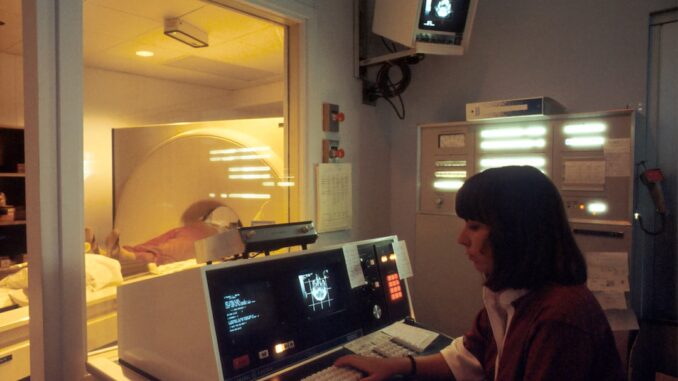
Summary
SimonMed Imaging is revolutionizing full-body MRIs with AI, improving accuracy, speed, and patient outcomes. The technology enhances image quality, reduces scan times, and helps radiologists detect subtle abnormalities, leading to earlier diagnoses. This article explores the challenges, solutions, and benefits of SimonMed’s AI-driven approach.
** Main Story**
Okay, let’s talk about how SimonMed Imaging is shaking things up with AI in full-body MRIs. It’s pretty impressive stuff, honestly, tackling some serious challenges that have been plaguing traditional MRI processes. I think you will agree.
The Old-School MRI Struggle
Traditional full-body MRIs? A real pain. Seriously. For radiologists, wading through thousands of images manually is not only mind-numbing, but it’s also a recipe for human error. You know how it is, staring at screens for hours. And, this can translate to slower results, potentially delaying critical diagnoses and treatment. What if something subtle gets missed? Even the most experienced eyes can get tired. For patients? Well, lying still in a noisy tube for ages isn’t exactly a spa day; the lengthy scan times are uncomfortable, and it limits the number of patients an imaging center can see, which is never good.
AI to the Rescue at SimonMed
So, SimonMed’s stepped in, and they’re using AI to completely revamp the full-body MRI game. These AI algorithms, it turns out, are trained on massive datasets of medical images. They automatically enhance images, cutting down on noise and boosting resolution, so even the most challenging images are clearer. It’s like giving the radiologist a super-powered magnifying glass! This also helps spot subtle patterns and highlights potential problems. They’re basically giving radiologists a co-pilot, helping them find the important stuff faster, which means quicker and more reliable diagnoses. Plus, and this is huge, the AI reduces scan times by something like 30-50%. Imagine the difference that makes for patient comfort and clinic efficiency!
The Payoff: AI-Enhanced MRI Benefits
What does all this AI wizardry actually do? Here’s the breakdown:
- Accuracy Boost: AI’s not perfect, but it definitely improves image analysis, reducing the chances of missing something critical. It’s not just about speed; it’s about getting it right. And I’m sure we all agree it is better to be safe than sorry.
- Speedy Results: Let’s face it, nobody likes waiting for test results. Automating image processing means faster turnaround times, and that’s good for everyone. One anecdote I have is, my coworker had an MRI done, and was waiting anxiously for weeks on end. This would solve this issue!
- Faster Scans = Happier Patients: Shorter scan times mean more comfortable patients, and more efficient imaging centers. Win-win. No one wants to spend any longer than they have to in those machines, right?
- Better Outcomes: Early and accurate diagnoses? That’s the key to faster intervention and better outcomes. It’s all connected.
More Than Just MRIs: SimonMed’s AI Vision
But SimonMed isn’t stopping at full-body MRIs. They’ve also got an AI-powered Personalized Breast Cancer Detection (PBCD) program, which gives women personalized risk assessments and tailored screening plans. It really showcases their commitment to using AI for a more comprehensive approach to patient care. And as AI continues to evolve, you can bet SimonMed will be right there, pushing the boundaries of medical imaging. They’re making things faster, more accurate, and ultimately, better for patients. It is truly great work.
SimonMed’s really demonstrating how AI can transform healthcare, not just in imaging, but across the board. It is an exciting time in medical history!


The reduction in scan times is a fantastic benefit, especially for patients who experience anxiety in MRI machines. Exploring virtual reality integration during shorter scans could further improve the patient experience.
That’s a fantastic point about integrating virtual reality! With shorter scan times, it becomes even more feasible to use VR to help patients relax and feel more comfortable during the process. It would be great to see more research and implementation in that area to further improve the patient experience.
Editor: MedTechNews.Uk
Thank you to our Sponsor Esdebe
So, radiologists get a co-pilot, eh? Hopefully, it won’t start asking for coffee breaks and complaining about the fluorescent lighting. Seriously though, fewer missed subtleties sounds like a win for everyone (except maybe the subtleties themselves).